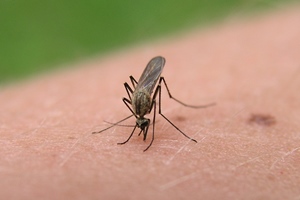Insect Repellant 101
 With warm summer weather in the forecast, many people take the opportunity to spend more time in the great outdoors. Camping, hiking and boating are all on the agenda! But beware—being outside means sharing the wilderness with all of the creatures that live there. This includes the insects!
With warm summer weather in the forecast, many people take the opportunity to spend more time in the great outdoors. Camping, hiking and boating are all on the agenda! But beware—being outside means sharing the wilderness with all of the creatures that live there. This includes the insects!
A weekend getaway out in the woods by the lake can become a lot less relaxing if you’re spending your time constantly swatting at mosquitoes and other flying bugs. And it’s not just your weekend that’s at stake. Your health is at risk too! Many insects still spread diseases that can cause a great deal of harm. For example, mosquitoes can be carriers of encephalitis and West Nile virus and ticks can spread Lyme disease.
An ounce of prevention is worth a pound of cure (or even more) when it comes to insects. Common sense and a little advance planning can go a long way in protecting you from their bites and the serious health problems they can cause. If you’re hiking and the weather permits, consider wearing long pants and long-sleeved shirts to keep the bugs off of your exposed skin. And wear a hat to keep them out of your hair. If you’re hiking through areas with tall grass, remember to tuck your pants into your socks to keep ticks from being able to leap onto your legs. Wearing light-colored clothing can help as well, since you’ll be able to see any tagalong insects more easily and remove them when you return home or to your campsite. Some specialty outdoor clothing has been treated with permethrin, which is an insecticide that has been rated safe for humans. If possible, always take a shower after your hike and check carefully for ticks. You should also avoid hiking or being outdoors near sunset, when many types of insects (especially mosquitoes) tend to swarm the most.
When it comes to insect repellents themselves, the clear winners in terms of effectiveness are commercial preparations that contain DEET (diethyltoluamide). Although it is chemical-based, it has been in use since 1957 and studies show that in concentrations ranging from 5% to 30% it can effectively keep insects away for up to five or six hours. Both the U.S. Environmental Protection Agency and the U.S. Centers for Disease Control rate it as safe for adults and for children over the age of two months. However, it is worth mentioning that some health-conscious consumers have worries about its long-term effects since it does come in contact with the skin and may enter the bloodstream.
A more “natural” alternative to DEET that has appeared in recent years is picaridin, which is sold in strengths ranging from 7% to 20%. Some fans believe it even has a few advantages over DEET, including the fact that it doesn’t adversely affect clothing made from plastics (DEET does). Some also think that it smells better.
Oil of lemon eucalyptus is another more “natural” insect repellent that may be safer than DEET and compares favorably in head-to-head tests. It has also received very favorable consumer reviews for its effectiveness. One commercial formula called Repel Lemon Eucalyptus was recently tested by Consumer Reports and found to be effective, but its manufacturer advises against its use on children under the age of three years.
Some “completely natural” outdoorsmen even make their own insect repellents out of lavender and vodka. Seriously. However, many popular products that contain plant oils like citronella, lemongrass and rosemary don’t seem to work.
Whichever insect repellent you choose, be sure to apply it to all areas of exposed skin before you go outdoors, including your wrists and ankles if you’re wearing long pants and shirts. When using spray repellents, it’s important to avoid getting any into your eyes, nose and mouth. The best way to do this is to spray a little into your palm and use your hands to rub the repellent onto exposed areas of your face.
Remember—a bit of common sense and a little planning are all it takes to make sure your weekend in the woods is relatively insect free! Get out there and enjoy!